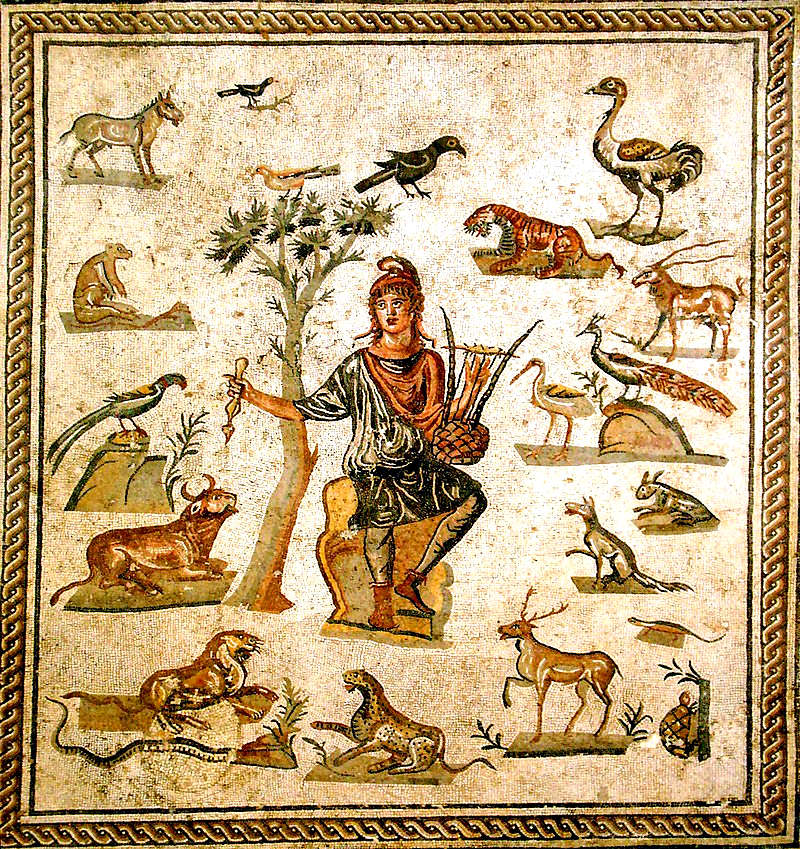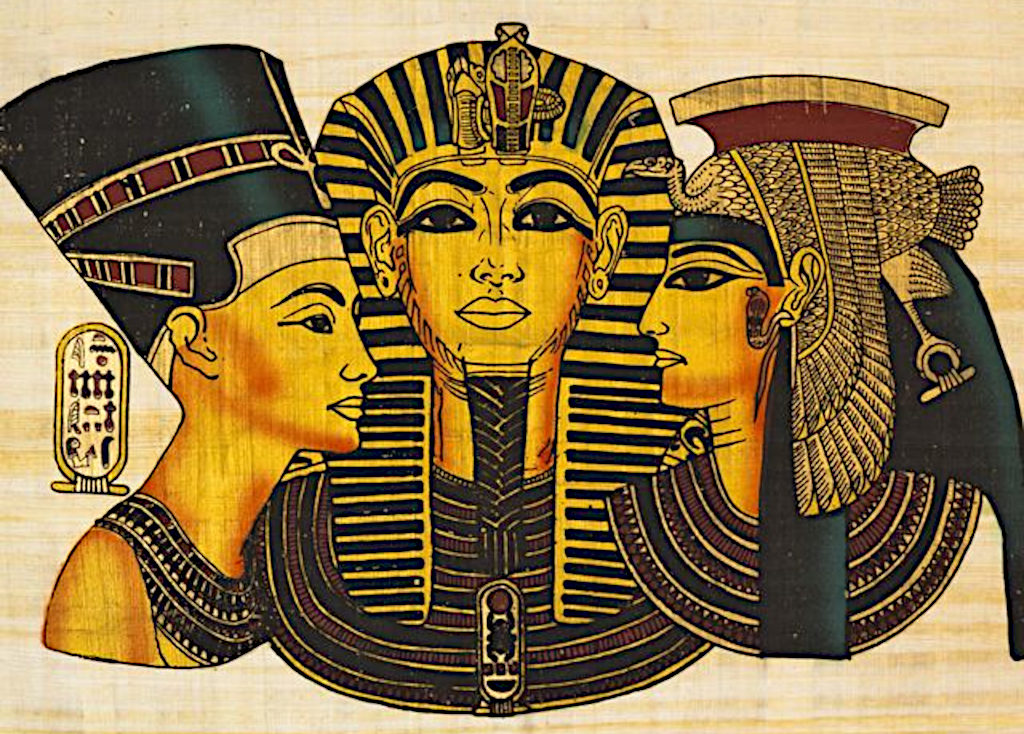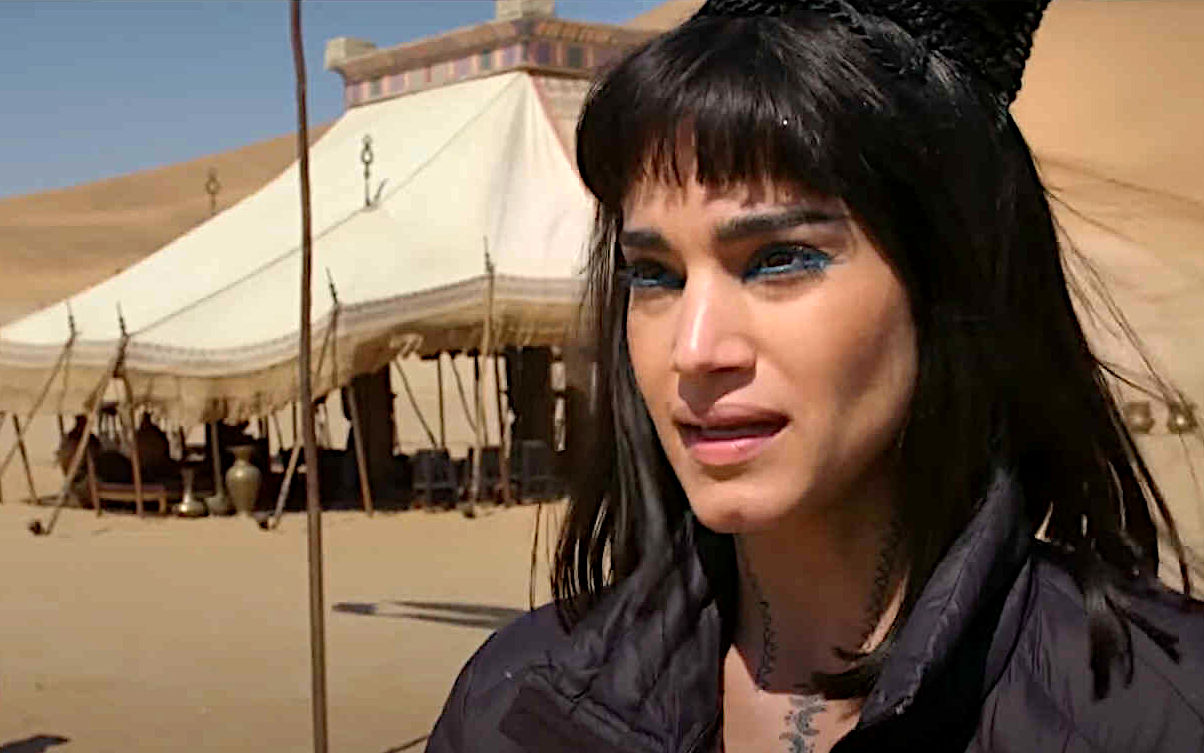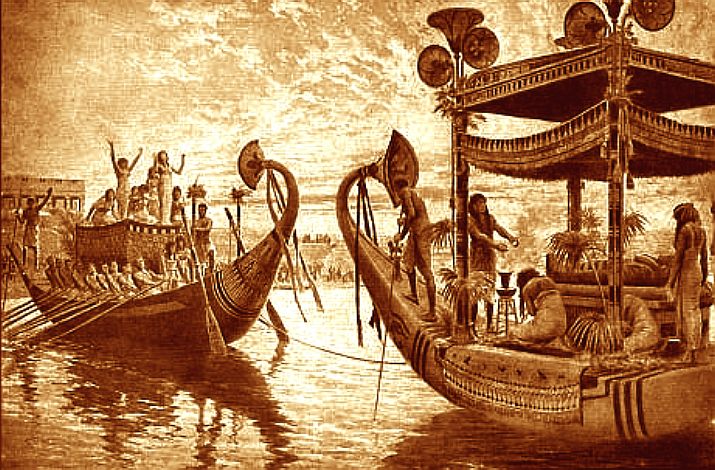
You've
probably has a feeling you've been somewhere before, but
know it is your physical first visit. This is not unusual.
But that feeling is a long staging post from reincarnation.
Technically,
if the right state of preservation and preparation is made,
it might be possible to recreate a life, to as near a
past-life as possible. That is the subject of our story: Cleopatra
The Mummy.
Without
doubt, in the modern age we can clone people. The technology
is real. It is though illegal to clone a human in most
countries. Meaning,
that only in exceptional situations might any group or
religious sect attempt it.
On
the other hand, natural conception is the splicing
of DNA from a man and a woman, to make a new life. This
might even be assisted via 'in vitro fertilization,' a common medical procedure whereby an egg is fertilized by sperm in a test tube or elsewhere outside the
body - typically in a laboratory.
Cloning
is a procedure where eggs from many mammals work just as
well as a human egg, by replacing the nucleus in an egg with
a cell from the animal to be replicated. Electricity is then
used to join them. The cells then divide to form an embryo,
ready to be implanted in a surrogate host. Or, in our case,
an artificial womb.
REINCARNATION
Reincarnation, also known as rebirth or transmigration, is the philosophical or religious concept that the non-physical essence of a living being begins a new life in a different physical form or body after biological death. Resurrection is a similar process hypothesized by some religions, in which a soul comes back to life in the same body. In most beliefs involving reincarnation, the soul is seen as immortal and the only thing that becomes perishable is the body. Upon death, the soul becomes transmigrated into a new infant (or animal) to live again. The term transmigration means passing of soul from one body to another after death.
Reincarnation is a central tenet of the Indian religions such as Buddhism, most Hinduism, Jainism, Sikhism and most Paganism, although there are Hindu and Pagan groups who do not believe in reincarnation, instead believing in an afterlife. In various forms, it occurs as an esoteric belief in many streams of Judaism in different aspects, in some beliefs of the Indigenous peoples of the Americas, and some Indigenous Australians (though most believe in an afterlife or spirit world). A belief in rebirth/metempsychosis was held by Greek historical figures, such as Pythagoras, Socrates, and Plato, as well as in various modern religions.
Although the majority of denominations within Christianity and Islam do not believe that individuals
reincarnate. Christians do believe in resurrection, as immortalized
when Jesus
Christ, ascended from the dead, after his crucifixion.
Particular groups within these religions do refer to reincarnation; these groups include the mainstream historical and contemporary followers of Cathars, Alawites, the Druze, and the Rosicrucians. The historical relations between these sects and the beliefs about reincarnation that were characteristic of Neoplatonism, Orphism, Hermeticism, Manichaenism, and Gnosticism of the Roman era as well as the Indian religions have been the subject of recent scholarly research. In recent decades, many Europeans and North Americans have developed an interest in reincarnation, and many contemporary works mention it.

EGYPTIAN BELIEFS - MUMMIFICATION
It is known that the Egyptians believed in reincarnation or the transmigration of the soul. They thought the soul transmigrated from body to body and this was a reason why they embalmed the body in order to preserve it so that it could journey along with ka, an animating force that was believed to be counterpart of the body, which would accompany it in the next world or life.
Ka might be considered equivalent to the term of soul. This establishes the dating of the concept of reincarnation back to the ancient Egyptian religion but many think it dates beyond antiquity.
Soon it was thought the soul leaving a dead body would seek another body to enter, or enter an animal of a lower life form. It was also thought the soul left the body during sleep. This soul was pictured as vapors that entered and left through the nostrils and mouth.
Later grew the notion the soul transmigrated to an infant of one of dead person’s kin. This helped to explain family resemblances.
The Egyptians say that Demeter [that is, Isis] and Dionysos [that is, Osiris] are rulers of the world below; and the Egyptians are also the first who reported the doctrine that the soul of man is immortal, and that when the body dies, the soul enters into another creature which chances then to be coming to the birth, and when it has gone the round of all the creatures of land and sea and of the air, it enters again into a human body as it comes to the birth; and that it makes this round in a period of three thousand years. This doctrine certain Hellenes adopted, some earlier and some later, as if it were of their own invention, and of these men I know the names but I abstain from recording them. (Herodotus, Histories Book II, 123)

THE
EGYPTIANS TRIED TO BLOCK REINCARNATION
In a small crypt in the Valley of the Kings in Luxor, Egypt, there is a small, nondescript tomb. Labeled KV55, it is right near King Tut’s tomb. Some originally believed it was his father, but ultimately that is uncertain.
Carbon dating has laid serious doubt to that concept. More importantly, however, several odd situations were noted when the crypt was excavated in 1907.
Foremost, there was a hieroglyph curse on the wall. It said, “The evil one should not live again.” Additionally, some aspects were abnormal compared to other tombs. Inscriptions are typically on the outside of cardinal blocks surrounding sarcophagi, but this tomb had hieroglyphs facing inward. It’s as if this tomb was designed to keep someone in, which is
the opposite of the usual purpose; keeping out
grave-robbers.
This is the
beginning of The Mummy
2017. Keeping a spirit entombed, with bold warnings not
to disturb. The same applies to the 1999 film; The
Mummy.
The ancient Egyptians believed that when they died their spiritual body would continue to exist in an afterlife very similar to their living world. However, entry into this afterlife was not guaranteed. The dead had to negotiate a dangerous underworld journey and face the final judgment before they were granted access.
The Egyptian concept of 'eternal life' was often seen as being reborn indefinitely. Therefore, the souls who had lived their life elegantly were guided to
Osiris to be born again. In order to achieve the ideal afterlife, many practices had to be performed during one's life.
In Egyptian history, there was no word for a "queen regnant" as in contemporary history, "king" being the ancient Egyptian title regardless of gender. Pharaoh had become the name for the ruler. Hatshepsut (for
example) is not unique, in taking the title of king.
CLASSICAL GREEK ANTIQUITY
Early Greek discussion of the concept dates to the sixth century BCE. An early Greek thinker known to have considered rebirth is Pherecydes of Syros (fl. 540 BCE). His younger contemporary Pythagoras (c. 570–c. 495 BCE), its first famous exponent, instituted societies for its diffusion. Some authorities believe that Pythagoras was Pherecydes' pupil, others that Pythagoras took up the idea of reincarnation from the doctrine of Orphism, a Thracian religion, or brought the teaching from India.
Plato (428/427–348/347 BCE) presented accounts of reincarnation in his works, particularly the Myth of Er, where Plato makes Socrates tell how Er, the son of Armenius, miraculously returned to life on the twelfth day after death and recounted the secrets of the other world. There are myths and theories to the same effect in other dialogues, in the Chariot allegory of the Phaedrus, in the Meno, Timaeus and Laws. The soul, once separated from the body, spends an indeterminate amount of time in "formland" (see The Allegory of the Cave in The Republic) and then assumes another body.
In Phaedo, Plato has his teacher Socrates, prior to his death, state: "I am confident that there truly is such a thing as living again, and that the living spring from the dead." However, Xenophon does not mention Socrates as believing in reincarnation, and Plato may have systematised Socrates' thought with concepts he took directly from Pythagoreanism or Orphism.
It was around the first century AD that both the Greek and Roman writers were surprised by the fact that the Druids, a priestly caste of the Celts (see Druidism), believed in reincarnation.
The Greek writer Diordus Siculus (c. 60 BC – 30 AD) noted that the Druids believed “the souls of men are immortal, and that after a definite number of years they live a second life when the soul passes to another body.” The Greek philosopher Strabo (c. 63 BC – 21 AD) observed the Druids believed that “men’s souls and the universe are indestructible, although at times fire and water may prevail.”
MYSTERY CULTS
The Orphic religion, which taught reincarnation, about the sixth century BC, organized itself into mystery schools at Eleusis and elsewhere, and produced a copious literature. Orpheus, its legendary founder, is said to have taught that the immortal soul aspires to freedom while the body holds it prisoner. The wheel of birth revolves, the soul alternates between freedom and captivity round the wide circle of necessity. Orpheus proclaimed the need of the grace of the gods, Dionysus in particular, and of self-purification until the soul has completed the spiral ascent of destiny to live forever.
An association between Pythagorean philosophy and reincarnation was routinely accepted throughout antiquity, as Pythagoras also taught about reincarnation. However, unlike the Orphics, who considered metempsychosis a cycle of grief that could be escaped by attaining liberation from it, Pythagoras seems to postulate an eternal, neutral reincarnation where subsequent lives would not be conditioned by any action done in the previous.
LATE AUTHORS
In later Greek literature the doctrine is mentioned in a fragment of Menander and satirized by Lucian. In Roman literature it is found as early as Ennius, who, in a lost passage of his Annals, told how he had seen Homer in a dream, who had assured him that the same soul which had animated both the poets had once belonged to a peacock. Persius in his satires (vi. 9) laughs at this, it is referred to also by Lucretius and Horace.
Virgil works the idea into his account of the Underworld in the sixth book of the Aeneid. It persists down to the late classic thinkers, Plotinus and the other Neoplatonists. In the Hermetica, a Graeco-Egyptian series of writings on cosmology and spirituality attributed to Hermes Trismegistus/Thoth, the doctrine of reincarnation is central.

THE ROMANS
Even Julius Caesar wrote of the Celts “They wish to inculcate this as one of their leading tenets, that souls do not become extinct, but pass after death from one body to another, and they think that men by this tenet are in a great degree stimulated to valor, the fear of death being disregarded.” Elsewhere Caesar complained the Druids were a troublesome
people who were difficult to eradicate.
WESTERN BELIEFS
Before the late nineteenth century, reincarnation was a relatively rare theme in the West. In ancient Greece, the Orphic Mysteries and Pythagoreans believed in various forms of reincarnation. Emanuel Swedenborg believed that we leave the physical world once, but then go through several lives in the spiritual world
- a kind of hybrid of Christian tradition and the popular view of reincarnation.
More recently, many people in the West have developed an interest in and acceptance of
reincarnation. Many new religious movements include reincarnation among their beliefs, e.g. modern Neopagans, Spiritism, Astara, Dianetics, and Scientology. Many esoteric philosophies also include reincarnation, e.g. Theosophy, Anthroposophy, Kabbalah, and Gnostic and Esoteric Christianity such as the works of Martinus Thomsen.
Demographic survey data from 1999 to 2002 shows a significant minority of people from Europe (22%) and America (20%) believe in the existence of life before birth and after death, leading to a physical rebirth. The belief in reincarnation is particularly high in the Baltic countries, with Lithuania having the highest figure for the whole of Europe, 44%, while the lowest figure is in East Germany, 12%. A quarter of U.S. Christians, including 10% of all born again Christians, embrace the idea.
Ian Stevenson reported that belief in reincarnation is held (with variations in details) by adherents of almost all major religions except Christianity and Islam. In addition, between 20 and 30 percent of persons in western countries who may be nominal Christians also believe in reincarnation.
According to Dr. Brian Weiss, in 1980 one of his patients, "Catherine", began discussing past-life experiences under hypnosis. Weiss did not believe in reincarnation at the time but, after confirming elements of Catherine's stories through public records, came to be convinced of the survival of an element of the human personality after death. Weiss claims he has regressed more than 4,000 patients since 1980.
Neale Donald Walsch, an American author of the series Conversations with God who says his books are not channelled, but rather that they are inspired by God and that they can help a person relate to God from a modern perspective claims that he has reincarnated more than 600 times.
Other influential contemporary figures that have written on reincarnation include Alice Ann Bailey, one of the first writers to use the terms New Age and age of Aquarius, Torkom Saraydarian, an Armenian-American musician and religious author, Dolores Cannon, Atul Gawande, Michael Newton, Bruce Greyson, Raymond Moody and Unity Church founder Charles Fillmore.
One 1999 study by Walter and Waterhouse reviewed the previous data on the level of reincarnation belief and performed a set of thirty in-depth interviews in Britain among people who did not belong to a religion advocating reincarnation. The authors reported that surveys have found about one fifth to one quarter of Europeans have some level of belief in reincarnation, with similar results found in the USA. In the interviewed group, the belief in the existence of this phenomenon appeared independent of their age, or the type of religion that these people belonged to, with most being Christians. The beliefs of this group also did not appear to contain any more than usual of "new age" ideas (broadly defined) and the authors interpreted their ideas on reincarnation as "one way of tackling issues of suffering", but noted that this seemed to have little effect on their private lives.
Waterhouse also published a detailed discussion of beliefs expressed in the interviews. She noted that although most people "hold their belief in reincarnation quite lightly" and were unclear on the details of their ideas, personal experiences such as past-life memories and near-death experiences had influenced most believers, although only a few had direct experience of these phenomena. Waterhouse analyzed the influences of second-hand accounts of reincarnation, writing that most of the people in the survey had heard other people's accounts of past-lives from regression hypnosis and dreams and found these fascinating, feeling that there "must be something in it" if other people were having such experiences.

DEJA VU - I'VE BEEN HERE BEFORE
Over a period of 40 years, psychiatrist Ian Stevenson, from the University of Virginia, conducted more than 2,500 case studies of young children who claimed to remember past lives. He published twelve books, including Twenty Cases Suggestive of Reincarnation, Reincarnation and Biology: A Contribution to the Etiology of Birthmarks and Birth Defects (a two-part monograph), and Where Reincarnation and Biology Intersect. In his cases he documented the child's statements and testimony from family members and others, often along with correlates to a deceased person who in some ways seemed to match the child's memory. Stevenson also investigated cases in which birthmarks and birth defects seemed to match wounds and scars on the deceased. Sometimes included in his documentation were medical records like autopsy photographs. Expecting controversy and skepticism, Stevenson also searched for disconfirming evidence and alternative explanations for the reports, but, as the Washington Post reported, in scores of cases he concluded that no normal explanation sufficed.
Other academic researchers who have undertaken similar pursuits include Jim B. Tucker, Antonia Mills, Satwant Pasricha, Godwin Samararatne, and Erlendur Haraldsson, but Stevenson's publications remain the most well known. Stevenson's work in this regard was impressive enough to Carl Sagan that he referred to what were apparently Stevenson's investigations in his book The Demon-Haunted World as an example of carefully collected empirical data, and though he rejected reincarnation as a parsimonious explanation for the stories, he wrote that the phenomenon of alleged past-life memories should be further researched. Sam Harris cited Stevenson's works in his book The End of Faith as part of a body of data that seems to attest to the reality of psychic phenomena, but that only relies on subjective personal experience.
Some research suggest that past life memories may be formed by false memories or may simply be hoaxes. Some scholars consider techniques for retrieving past life memory such as past life regression a pseudoscience.
Déjà vu ("already seen") is a French loanword expressing when a person has done something and they experience the same feelings or the feeling that one has lived through the present situation before. Although some interpret déjà vu in a paranormal context, mainstream scientific approaches reject the explanation of déjà vu as "precognition" or "prophecy".
It is an anomaly of memory whereby, despite the strong sense of recollection, the time, place, and practical context of the "previous" experience are uncertain or believed to be impossible. Two types of déjà vu are recognized: the pathological déjà vu usually associated with epilepsy or that which, when unusually prolonged or frequent, or associated with other symptoms such as hallucinations, may be an indicator of neurological or psychiatric illness, and the non-pathological type characteristic of healthy people, about two-thirds of whom have had déjà vu experiences. People who travel often or frequently watch films are more likely to experience déjà vu than others. Furthermore, people also tend to experience déjà vu more in fragile conditions or under high pressure, and research shows that the experience of déjà vu also decreases with age.








